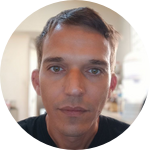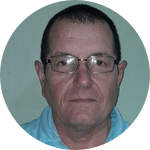About This Project
We are completing a prototype of an optical analogue audio recorder / player and we want to finish and test it. It uses phase-stepping interferometric holography, alongside direct electronic modulation (intensity level) to modulate a laser interference pattern.
The optical modulation technique utilized should allow us to record an optical track in a much smaller space than a soundtrack on film stock, and with better dynamic range also; to record 30-60 min of hi-fi sound in an optical disc.
Ask the Scientists
Join The DiscussionWhat is the context of this research?
This is a new kind of gadget for anyone who does anything related to audio signals.
It will look like an old sound camera, used in the early days of sound film to record sounds synchronized with the image in an analog way, but it will have the modern look and functionality of the new optical and photographic equipment.
We reverse-engineered all methods of sound recording and measurement, and designed an optical transducer that could be considered the "optical version" of a stereo cutter head (for vinyl records).
After that, we spent a year and a half learning about optical components until we came up with a streamlined design of an optical table or fixture that could be retrofitted to a traditional laser engraving machine - to which we also added a turntable to engrave a photopolymer disc.
What is the significance of this project?
We are trying to make what it could be the best analogue recording and playback format for audio that is feasible to do.
If this goal is achieved, then analogue signals could be closer to digital in terms of reliability, and compete for the same market. Higher frequency signals could be recorded too, using reflective piezo exciters to modulate the phase of the signal, instead of audio motors, and a higher recording speed.
These signals could also be transmitted though optical fiber; and as another end goal of our project is to make an analogue optical modem for audio and video.
What are the goals of the project?
It is intended, once the prototype is built, to make a recording. This would validate the proposed technology.
We want to record a track 80 micron wide, recorded with a horizontal laser line of ~80micron x ~1 micron, on 3M PCB photopolymer. These disks could be then transfered to copies as it is done with masters holograms and gramophone masters, then read optically.
Our main goal is to update the recording and playback technology in a purely analog way, hoping to obtain a sound that surpasses the digital technology.
The recording head itself that can be seen an optical oscillator; which did not existed before. This could make optical communications more powerful than currently than mostly are limited to discrete signals or simple modulations.
Budget
The budget includes expenses for the purchase of the parts and pieces necessary for the construction of the prototype ($3720), payment for the manufacturing services of accessories ($2000) and the supplies necessary for the test recording ($100). For a total amount of $5820.
Endorsed by
 Project Timeline
Project Timeline
Our team is currently finishing the design plans for the optical table that holds the components and a turntable designed for the purpose. This is being self-financed. These plans should be ready soon, before the completion of the funding campaign. For this reason, if the funds are given, we think we will move on putting the hardware together right after.
If the tests succeeded we will work towards making business with it and launch a crowdfunding campaign to sell units of the device.
May 10, 2024
Project Launched
Jul 01, 2024
Have the chassis of the "oscillator", the turntable and the small accessories machined (made) and anodized
Jul 08, 2024
Assembly the hardware. That would happen at my location at Wasaga Beach, ON.
Jul 15, 2024
Conduct the first audio recording tests. And convert them to video with a microscope camera to be played-back with Aeolite (software).
Jul 22, 2024
Start looking for funding to develop an AI-powered analogue sensor; using a digital camera to track the optical recording, to position for the analogue sensor.
Meet the Team
Affiliates
Team Bio
At this moment, our team is lucky enough to count on the interest and presence of two awesome guys: Ennis, who is the inventor or the guy with the general idea, and Jose Angel who is the engineer who is doing the actual work of calculating everything, drawing everything and working around every detail.
We have been collaborating for over a year and a half developing this project.
We expect to make the analogue of the future. Our heart is in it.
José Angel Hernández Arias
Specialist with experience in the design of electrical, electronic and mechanical devices and also in the field of investment project management and in the development of Quality Management Systems according to ISO 9001 standards.
Ennis Eduardo Fontaine Quiros
I am a former graduated sound engineer, music collector and DJ; and nowadays I am only an audiophile in that regard.
I am also an inventor and I am obsessed with putting together the analogue recorder of the future.
For this I am using the experience gained in the past working with audio, and my most recent experience as an industrial labor worker.
Lab Notes
Nothing posted yet.
Additional Information
Sound-on-film uses 200-400 micron width per track. We expect that with the use of holography, and a physical device that provides an acoustic phase modulation alongside amplitude modulation, we could achieve somewhat better fidelity than sound on film in less space. Somewhat comparable to vinyl, but optical.
Project Backers
- 2Backers
- 1%Funded
- $20Total Donations
- $10.00Average Donation


